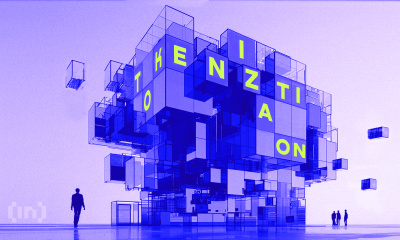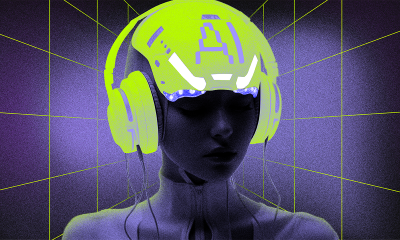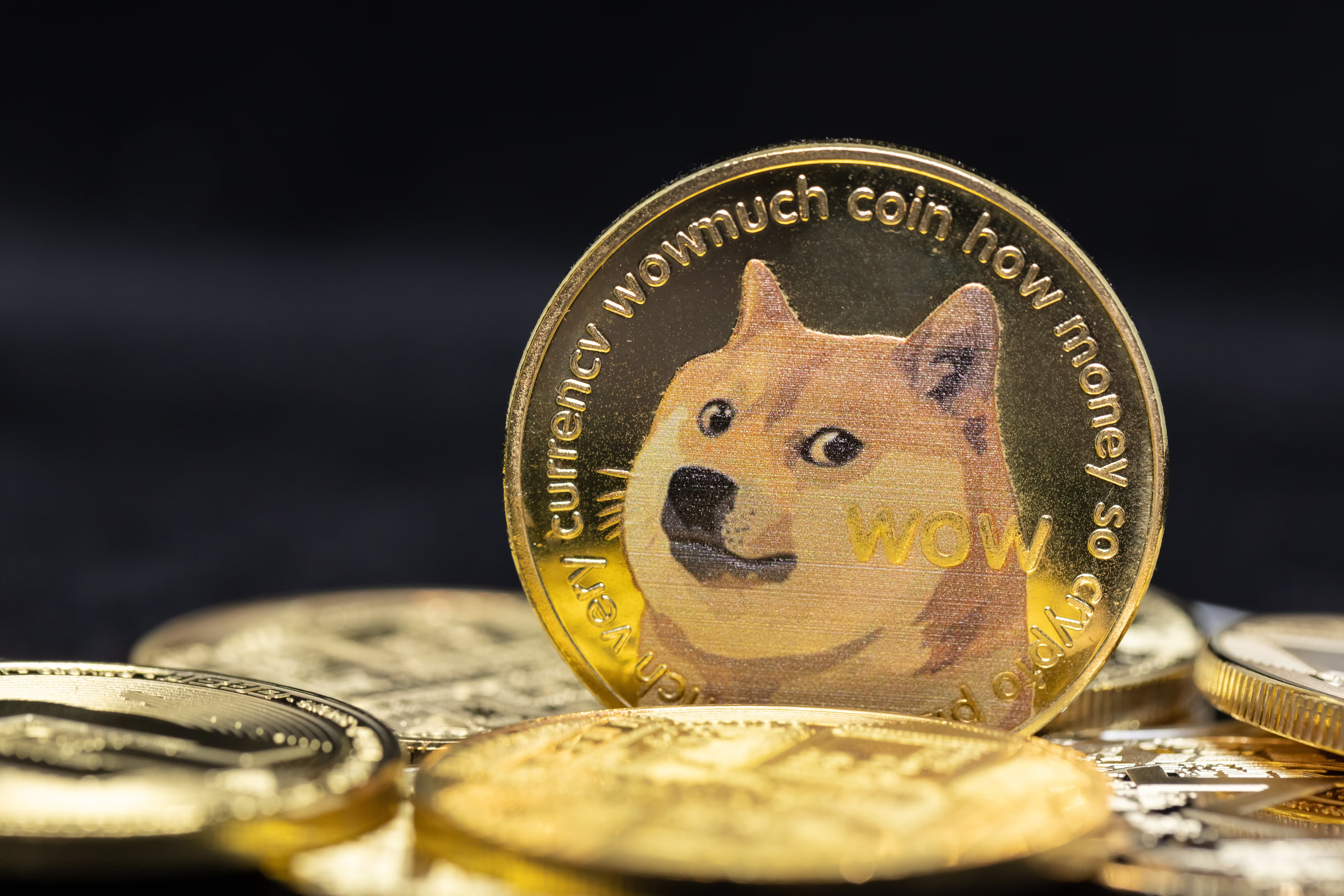Market
How Tokenization Unlocks New Opportunities

The rise of real-world asset (RWA) tokenization is reshaping traditional investment markets, unlocking new opportunities in sectors beyond finance. Though tokenization has historically focused on real estate, precious metals, and fine art, the ability to tokenize tangible luxury goods is now emerging as a transformative force in the industry.
BeInCrypto spoke with Harley Foote, CEO and Co-founder of CryptoAutos, a leading project in the RWA luxury car market, to understand what is driving this new phenomenon’s rise and its future prospects.
RWA Market Growth and Future Potential
Real-world asset tokenization has surged as one of the crypto industry’s dominant narratives in the last few years.
Tokenization leverages blockchain to create digital representations of real-world assets, allowing for fractional ownership. This approach democratizes access to expensive assets by breaking them into more affordable, divisible tokens.
Real estate, commodities, art, financial assets, and precious metals are the most commonly tokenized real-world assets. In 2024, the total market size of tokenized assets reached $186 billion, marking a 32% increase compared to the previous year, according to a report from the Tokenized Asset Coalition.
“The RWA market has exploded in the last year due to a perfect storm of macro trends, technological advancements, and shifting investor sentiment. Institutional interest in blockchain-based assets, ETFs becoming, dare we say, the norm, improved regulatory clarity in key jurisdictions, and the increasing need for liquidity in traditionally illiquid markets have all contributed to this acceleration,” Foote told BeInCrypto.
The industry’s prospects for the future remain promising. According to German consulting firm Roland Berger, the value of tokenized assets is projected to exceed $10.9 trillion by 2030, with real estate, debt, and investment funds leasing as the top three tokenized asset categories.

With RWA tokenization growing, new asset categories are emerging.
The Rise of Tokenized High-End Goods
The tokenization of luxury goods, such as supercars, yachts, jets, and high-end watches, is becoming a transformative trend that is difficult to ignore.
“Initially, RWAs were focused on tokenizing financial instruments like bonds, real estate, and commodities, which made sense. However, as the technology has matured and investors have had their eyes opened and their tastebuds tickled, we’re seeing an expansion into tangible assets with intrinsic scarcity and strong market demand, such as luxury cars, art, and collectibles. Supercars, for example, have traditionally been reserved for ultra-high-net-worth individuals, but that is now a thing of the past due to tokenization,” Foote explained.
In 2020, the crypto startup CurioInvest announced the sale of tokens representing fractional ownership of a 2015 limited-edition Ferrari F12 TDF. They offered these tokens, priced at $1 each, for a vehicle valued at over $1 million. The company also announced plans to tokenize 500 luxury cars, which they intended to store in a warehouse in Stuttgart.
In 2023, Cloud Yachts introduced a novel approach to the yachting industry by launching a tokenized experience related to superyachts.
The NFT company tokenized a 94-foot Sunseeker super yacht, aiming to offer luxury yacht cruises to individuals for a cost comparable to a night out in Miami. It sold each NFT for $500, which granted buyers one cruise around Miami on the Sunseeker 94 for a year.
Tokenized Luxury Vehicles
Earlier this month, CryptoAutos acquired a $20 million luxury car rental fleet in Dubai, featuring limited edition Lamborghini, Ferrari, Porsche, and Rolls Royce models. Customers will have the opportunity to earn USDT through the sale and rental of these vehicles.
According to Foote, luxury goods, particularly supercars, are ideal for tokenization relative to other asset classes.
“Unlike niche financial assets, luxury vehicles have universal appeal and recognition plus a liquid global market that attracts a wide variety of buyers. What sets supercars apart from other luxury assets, like fine art or jewellery, is their potential to generate yield through rentals or shared ownership models, transforming what was traditionally a static asset into a dynamic revenue-generating investment. Additionally, supercars often serve as a hedge against inflation. Much like fine wine, classic watches; supercars tend to outperform traditional-based investments during economic downturns,” he said.
Asset tokenization carves out a unique path toward greater financial inclusion by breaking down ownership into fractions.
Democratizing Luxury Asset Ownership
Luxury vehicles are called that way because only people with a disposable income in the millions can effectively give themselves the luxury to own one. Tokenization changes that.
“Traditional luxury car investments have been restricted to elite collectors with the capital to buy and maintain rare vehicles. Previously, you needed to pay for the whole vehicle but tokenization democratizes access. These new models can allow investors to own a share of high-value assets with minimal capital, trade their holdings in liquid markets rather than waiting for an entire vehicle resale and generate passive income from rental-based yields,” Foote told BeInCrypto.
Several supercars are limited editions, making them particularly well-suited for tokenization.
“The wider car market certainly is a depreciating asset, once they are mass-produced, they are sold and they rarely retain their value. But these are supercars, limited-production hypercars, and classic models. [They] are particularly well-suited for tokenization due to their inherent scarcity, exclusivity, and strong global brand appeal. Limited production runs coupled with collector demand naturally drives up value appreciation over time,” Foote added.
The growth of luxury goods in the RWA industry attracts attention from investors outside the crypto sector, potentially influencing the broader adoption of RWAs in mainstream finance.
“Luxury RWAs serve as a bridge between traditional investors and blockchain-based finance. We see the current progress towards tokenization of luxury assets, like supercars, yachts, and other items, only accelerating as mainstream adoption of RWAs takes hold,” Foote said.
These assets’ reliance on blockchain technology also inspires greater confidence among investors considering luxury goods as a way to diversify their portfolios.
Blockchain’s Role in Curbing Risks
In high-value asset trading, blockchain technology can help ensure transparency, liquidity, and security.
According to Foote, blockchain inherently eliminates many inefficiencies and risks associated with traditional asset ownership by providing transparent ownership at the source.
“Each tokenized asset is recorded on-chain, ensuring a clear ownership history which helps prevent fraud. Unlike traditional methods, investors can trade fractional shares of supercars, eliminating the need for lengthy resale processes. And due to the speed of blockchain technology you aren’t waiting for days for banks to clear your money, you can purchase your car with a few clicks,” he said.
Meanwhile, smart contracts further expedite the process and curb risks.
“Smart contracts enforce legal agreements, revenue-sharing models, and governance mechanisms, reducing the need for intermediaries. While transactions are immutable and tamper-proof, enhancing investor confidence,” Foote added.
Certain jurisdictions are creating regulatory structures to enable confident investor participation in response to the growth of luxury asset tokenization.
Regulatory Frameworks for RWA Tokenization
Different jurisdictions across the globe have implemented regulations for this emerging market, enabling investor access to tokenized RWAs.
“Regulatory frameworks vary widely. Dubai, Switzerland, and Singapore have emerged as favorable jurisdictions for asset tokenization, providing clear legal frameworks and investor protections. Meanwhile, the US and EU are still refining their RWA regulations, but we are seeing promising signs, especially within the US under the new leadership,” Foote told BeInCrypto.
In November 2024, the Monetary Authority of Singapore (MAS) introduced new measures to facilitate the commercialization of tokenized assets. These measures included forming commercial networks designed to enhance liquidity in tokenized assets.
MAS also announced plans to develop a market infrastructure ecosystem and established industry frameworks for implementing and settling tokenized assets.
Meanwhile, Switzerland remains a pioneer in the tokenization sector, supported by its comprehensive legal structure for digital assets. The country’s 2021 Swiss DLT Bill facilitated the secure and compliant tokenization of diverse asset types, drawing international participants to its market.
Even before Singapore and Switzerland, Dubai was the first jurisdiction in the world to implement regulatory clarity for tokenized assets. In 2020, it established the Virtual Assets Regulatory Authority (VARA), a regulatory entity that oversees virtual assets.
This authority focuses on regulating various virtual assets, encompassing tokenized products, cryptocurrencies, and security tokens. Establishing VARA provided regulatory clarity, creating a secure environment for businesses and investors to explore and invest in tokenized assets.
“Dubai is quickly becoming a global hub for tokenized luxury assets due to progressive regulations, strong investor demand, and a thriving crypto ecosystem. We’ve seen multiple projects like Mantra, Reelly, and of course, ourselves, make significant commitments to RWA operations in Dubai so far in 2025,” Foote said.
Yet, before investing in tokenized luxury goods, it’s important to consider their associated risks.
Risks and Future Prospects
Although some countries have established clear regulatory frameworks for virtual assets, most have not. The overall regulatory landscape concerning tokenization is still developing.
Potential regulation changes could impact tokenized assets, requiring investors to remain informed about the changing legal environment.
Meanwhile, tokenized assets, like other investments, are susceptible to market fluctuations. Although tokenization can improve liquidity, it does not mitigate the inherent volatility in asset markets, particularly real estate and commodities.
“We would never shy away from the risks involved, like in any market. Things like market volatility and general economic conditions can impact demand. As can maintenance costs, especially with classic cars, due to the requirements of careful upkeep. And there is the elephant in the room which is regulatory uncertainty. Evolving laws and regulations around tokenized assets could affect investment structures,” Foote told BeInCrypto.
Nonetheless, Foote is certain that the demand for tokenized luxury goods is there and will not disappear anytime soon.
“Investors are increasingly seeking yield-generating luxury assets that offer both utility and appreciation potential. It’s a genuine new frontier that’s opening up right in front of us, and we are taking the opportunity with both hands on that steering wheel and turning the NOS up to the max,” he concluded.
While challenges remain, the appeal of tokenized luxury goods suggests that this is a developing market to watch.
Disclaimer
Following the Trust Project guidelines, this feature article presents opinions and perspectives from industry experts or individuals. BeInCrypto is dedicated to transparent reporting, but the views expressed in this article do not necessarily reflect those of BeInCrypto or its staff. Readers should verify information independently and consult with a professional before making decisions based on this content. Please note that our Terms and Conditions, Privacy Policy, and Disclaimers have been updated.
Market
Tokens Big Players Are Buying

Crypto whales are making bold moves heading into May 2025, and three tokens are standing out: Ethereum (ETH), Artificial Superintelligence Alliance (FET), and Onyxcoin (XCN). All three have seen a noticeable uptick in large-holder accumulation over the last week, signaling growing interest from big players despite recent volatility.
While ETH and XCN are both coming off sharp corrections, whale buying suggests confidence in a potential rebound. Meanwhile, FET is riding renewed momentum in the AI sector, with whale activity accelerating alongside rising prices.
Ethereum (ETH)
The number of Ethereum crypto whales—wallets holding between 1,000 and 10,000 ETH—has been steadily climbing since April 15. Back then, there were 5,432 such addresses.
That number has now risen to 5,460, the highest count since August 2023. At the same time, the concentration of ETH held by these whales is also hitting new highs, signaling growing accumulation by large holders.
While this can be interpreted as confidence in Ethereum’s long-term value, it also raises concerns about centralization and potential selling pressure if whales decide to take profits.

Ethereum price is currently down more than 19% over the last 30 days. If the correction continues, the price could retest support at $1,535. Losing that level might send ETH toward deeper support at $1,412 or even $1,385.
However, if the trend reverses, key resistance zones lie at $1,669 and $1,749—with a potential push toward $1,954 if bullish momentum builds.
In this context, the growing dominance of whales could act as either a stabilizing force or a looming risk, depending on how they respond to market shifts.
Artificial Superintelligence Alliance (FET)
The number of FET whales—wallets holding between 10,000 and 1,000,000 tokens—increased from 572 on April 13 to 586 by April 19.
This steady growth in large holders points to rising confidence among bigger players. It comes at a time when the broader AI crypto narrative is showing signs of a rebound.
Key AI coins like FET, TAO, and RENDER have all increased over 9% in the last seven days, with FET itself gaining more than 8% in the past 24 hours and 13.5% over the week. This suggests a possible comeback for the artificial intelligence narrative in crypto.

If this momentum continues, FET could push toward resistance at $0.659. A clean breakout from that level could open the door to further gains, with $0.77 and $0.82 as the next potential targets.
On the flip side, if the rally stalls, FET might drop back to test support at $0.54. A breakdown below that could send it as low as $0.44.
With whale activity heating up and the AI sector showing renewed strength, FET’s next move could be a key signal for where the narrative heads next.
Onyxcoin (XCN)
Onyxcoin was one of the standout performers in January, but its momentum has faded in recent months. After a strong bounce—up of over 57% in the last 30 days, the token is now correcting, down 19% in the past seven days.
Despite this pullback, accumulation continues. The number of crypto whales holding between 1 million and 10 million XCN has grown from 528 on April 16 to 541, suggesting some large holders may be buying the dip.

If the correction deepens, XCN could lose support at $0.0165. A drop below that may open the door to further declines toward $0.0139 and $0.0123.
But if the trend flips back upward, the token could first test resistance at $0.020. A strong breakout from there might lead to a move toward $0.027. With whale activity on the rise and volatility returning, XCN’s next move could be decisive.
Disclaimer
In line with the Trust Project guidelines, this price analysis article is for informational purposes only and should not be considered financial or investment advice. BeInCrypto is committed to accurate, unbiased reporting, but market conditions are subject to change without notice. Always conduct your own research and consult with a professional before making any financial decisions. Please note that our Terms and Conditions, Privacy Policy, and Disclaimers have been updated.
Market
1 Year After Bitcoin Halving: What’s Different This Time?

Bitcoin (BTC) is now one year past its most recent halving, and this cycle is shaping up to be unlike any before it. Unlike previous cycles where explosive rallies followed the halving, BTC has seen a far more muted gain, up just 31%, compared to 436% over the same timeframe in the last cycle.
At the same time, long-term holder metrics like the MVRV ratio are signaling a sharp decline in unrealized profits, pointing to a maturing market with compressing upside. Together, these shifts suggest Bitcoin may be entering a new era, defined less by parabolic peaks and more by gradual, institution-driven growth.
A Year After the Bitcoin Halving: A Cycle Unlike Any Other
This Bitcoin cycle is unfolding noticeably differently than previous ones, signaling a potential shift in how the market responds to halving events.
In earlier cycles—most notably from 2012 to 2016 and again from 2016 to 2020—Bitcoin tended to rally aggressively around this stage. The post-halving period was often marked by strong upward momentum and parabolic price action, largely fueled by retail enthusiasm and speculative demand.
The current cycle, however, has taken a different route. Instead of accelerating after the halving, the price surge began earlier, in October and December 2024, followed by consolidation in January 2025 and a correction in late February.
This front-loaded behavior diverges sharply from historical patterns where halvings typically acted as the catalyst for major rallies.
Several factors are contributing to this shift. Bitcoin is no longer just a retail-driven speculative asset—it’s increasingly seen as a maturing financial instrument. The growing involvement of institutional investors, coupled with macroeconomic pressures and structural changes in the market, has led to a more measured and complex response.
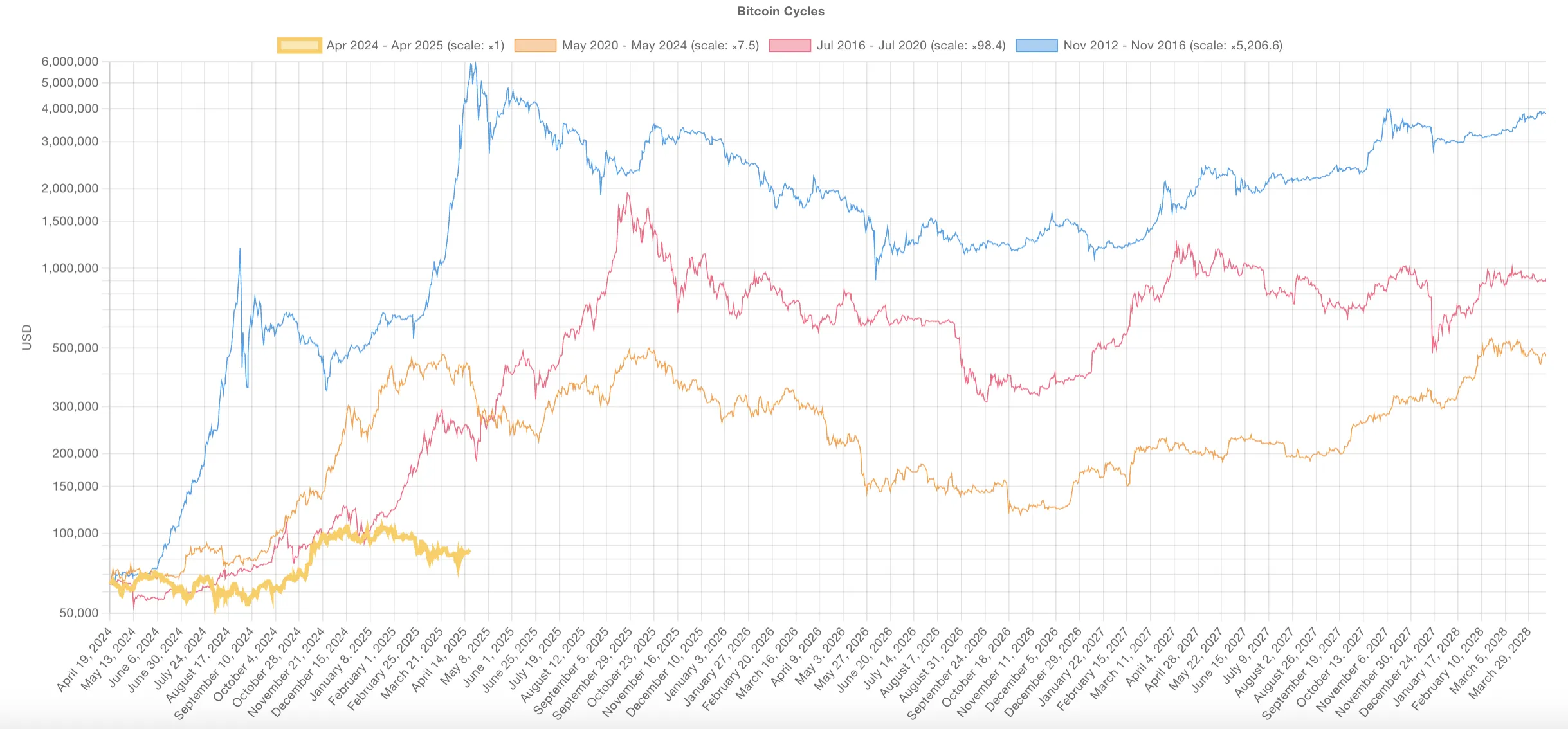
Another clear sign of this evolution is the weakening strength of each successive cycle. The explosive gains of the early years have become harder to replicate as Bitcoin’s market cap has grown. For instance, in the 2020–2024 cycle, Bitcoin had climbed 436% one year after the halving.
In contrast, this cycle has seen a much more modest 31% increase over the same timeframe.
This shift could mean Bitcoin is entering a new chapter. One with less wild volatility and more steady, long-term growth. The halving may no longer be the main driver. Other forces are taking over—rates, liquidity, and institutional money.
The game is changing. And so is the way Bitcoin moves.
Nonetheless, it’s important to note that previous cycles also featured periods of consolidation and correction before resuming their uptrend. While this phase may feel slower or less exciting, it could still represent a healthy reset before the next move higher.
That said, the possibility remains that this cycle will continue to diverge from historical patterns. Instead of a dramatic blow-off top, the outcome may be a more prolonged and structurally supported uptrend—less driven by hype, more by fundamentals.
What Long-Term Holder MVRV Reveals About Bitcoin’s Maturing Market
The Long-Term Holder (LTH) MVRV ratio has always been a solid measure of unrealized profits. It shows how much long-term investors are sitting on before they start selling. But over time, this number is falling.
In the 2016–2020 cycle, LTH MVRV peaked at 35.8. That signaled massive paper profits and a clear top forming. By the 2020–2024 cycle, the peak dropped sharply to 12.2. This happened even as Bitcoin price hit fresh all-time highs.
In the current cycle, the highest LTH MVRV so far is just 4.35. That’s a massive drop. It shows long-term holders aren’t seeing the same kind of gains. The trend is clear: each cycle delivers smaller multiples.
Bitcoin’s explosive upside is compressing. The market is maturing.
Now, in the current cycle, the highest LTH MVRV reading so far has been 4.35. This stark drop suggests long-term holders are experiencing much lower multiples on their holdings compared to previous cycles, even with substantial price appreciation. The pattern points to one conclusion: Bitcoin’s upside is compressing.

This isn’t just a fluke. As the market matures, explosive gains are naturally harder to come by. The days of extreme, cycle-driven profit multiples may be fading, replaced by more moderate—but potentially more stable—growth.
A growing market cap means it takes exponentially more capital to move the price significantly.
Still, it’s not definitive proof that this cycle has already topped out. Previous cycles often included extended periods of sideways movement or modest pullbacks before new highs were reached.
With institutions playing a larger role, accumulation phases could stretch longer. Therefore, peak profit-taking may be less abrupt than in earlier cycles.
However, if the trend of declining MVRV peaks continues, it could reinforce the idea that Bitcoin is transitioning away from wild, cyclical surges and toward a more subdued but structured growth pattern.
The sharpest gains may already be behind, especially for those entering late in the cycle.
Disclaimer
In line with the Trust Project guidelines, this price analysis article is for informational purposes only and should not be considered financial or investment advice. BeInCrypto is committed to accurate, unbiased reporting, but market conditions are subject to change without notice. Always conduct your own research and consult with a professional before making any financial decisions. Please note that our Terms and Conditions, Privacy Policy, and Disclaimers have been updated.
Market
VOXEL Climbs 200% After Suspected Bitget Bot Glitch
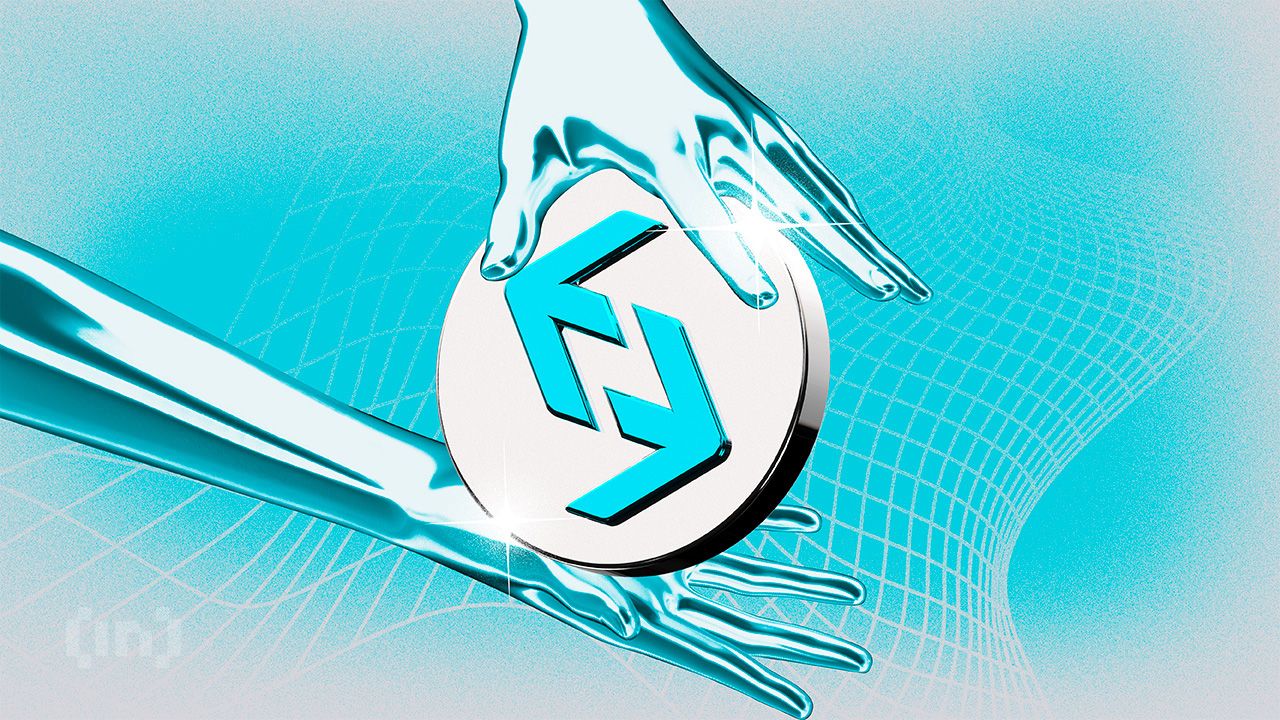
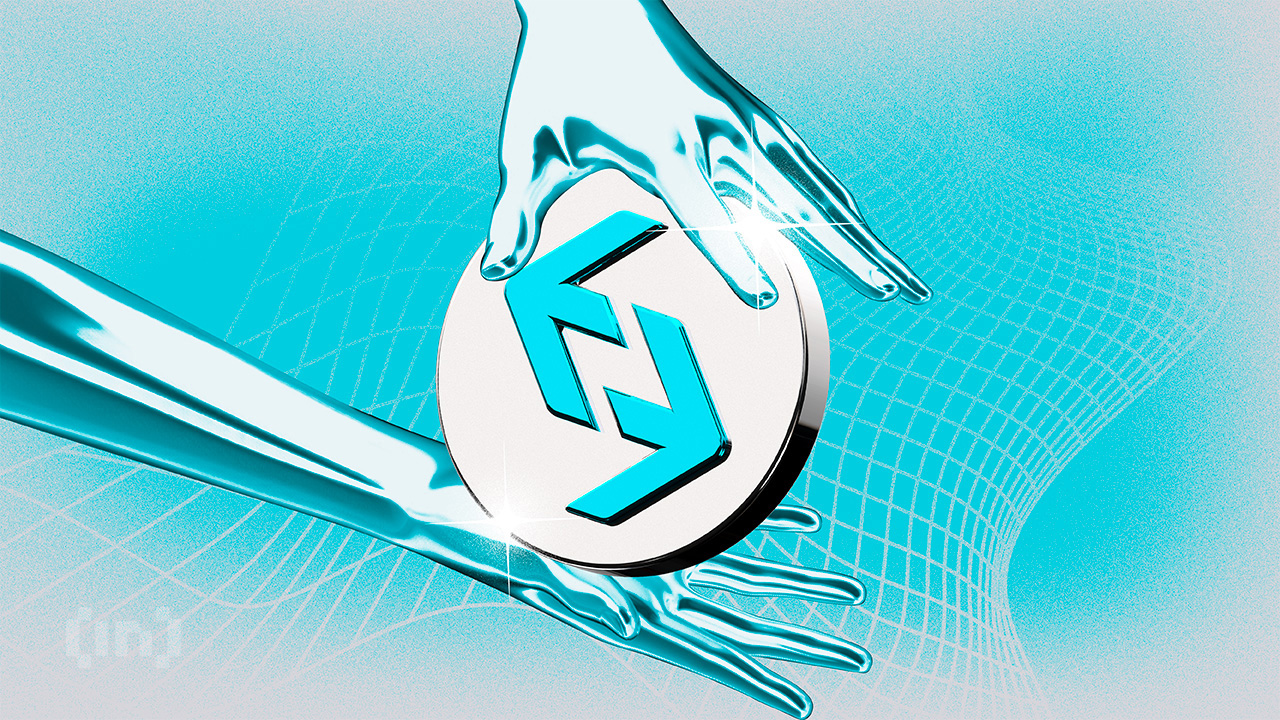
Voxies (VOXEL), a little-known gaming token, surged by over 200% within 24 hours on April 20 following a suspected malfunction in Bitget’s trading system.
The unexpected glitch led to an explosive spike in activity, pushing the VOXEL/USDT contract’s trading volume to an eye-watering $12.7 billion. According to Coingecko data, this significantly outpaces Bitcoin’s $4.76 billion volume on the same platform.
Bitget Trading Error Reportedly Lets Users Earn Six-Figure Profits
The unprecedented spike drew attention across the crypto space, particularly given that VOXEL is a relatively obscure free-to-play blockchain game token with a market cap under $30 million.
According to on-chain analyst Dylan, the Bitget bot repeatedly executed trades within the narrow $0.125 to $0.138 price range. Savvy traders quickly caught on, using just $100 to scalp profits exceeding six figures.
Reports suggest that the glitch allowed some users to walk away with tens or even hundreds of thousands of USDT in a matter of hours.
In response, Bitget’s spokesperson Xie Jiayin confirmed the platform was aware of the irregular activity and has launched an internal investigation. The company also noted that affected accounts may face temporary restrictions, urging users to contact in-app support for further assistance.
“Every platform, at every stage of development, may encounter challenges and uncertainties, yet these are an inevitable part of the journey. Bitget will provide the event details and resolution within 24 hours,” Jiayin added.
Meanwhile, the incident has sparked criticism from market experts and traders, many of whom question Bitget’s internal safeguards and technical maturity.
Several community members have criticized Bitget’s response to the issue. Some have claimed that the exchange’s decision to forcibly settle VOXEL contracts at discounted rates breached user trust. Bitget’s hybrid custody model is also receiving backlash following the incident.
“The platform’s product design reveals concerning flaws: a hybrid custody risk pool exposes users to systemic risks, and unrestricted position sizes open the door to manipulation. If these issues are not addressed, more altcoins could be weaponized against Bitget—potentially making it the next catastrophic failure in the crypto space,” one analyst stated.
Meanwhile, the timing of the incident is also notable. VOXEL is currently listed on Binance’s “Vote to Delist” program. The campaign aims to improve transparency and give the community a voice in token listings.
Overall, the Bitget incident has amplified concerns about potential market manipulation involving the token and highlighted the broader risks tied to centralized exchanges.
Disclaimer
In adherence to the Trust Project guidelines, BeInCrypto is committed to unbiased, transparent reporting. This news article aims to provide accurate, timely information. However, readers are advised to verify facts independently and consult with a professional before making any decisions based on this content. Please note that our Terms and Conditions, Privacy Policy, and Disclaimers have been updated.
-

 Altcoin19 hours ago
Altcoin19 hours agoCardano Bulls Secure Most Important Signal To Drive Price Rally
-
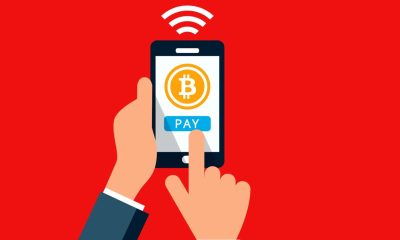
 Bitcoin22 hours ago
Bitcoin22 hours agoSwiss Supermarket Chain Welcomes Crypto Payments
-
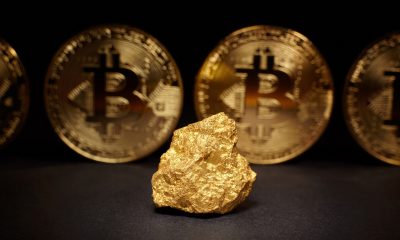
 Bitcoin15 hours ago
Bitcoin15 hours agoAnalyst Says Bitcoin Price Might Be Gearing Up For Next Big Move — What To Know
-

 Market21 hours ago
Market21 hours ago5 Crucial Red Flags Investors Missed
-

 Market20 hours ago
Market20 hours agoSUI Ranks 5th in DEX Volume, But Rally Lacks Strength
-

 Altcoin17 hours ago
Altcoin17 hours agoRipple Expands In Asia With Debut XRP Investment Tool
-

 Market23 hours ago
Market23 hours agoHedera Trading Slows 27% Even as Recovery Hints Emerge
-

 Regulation21 hours ago
Regulation21 hours agoJohn Deaton Lays Out 5 To-Do List




